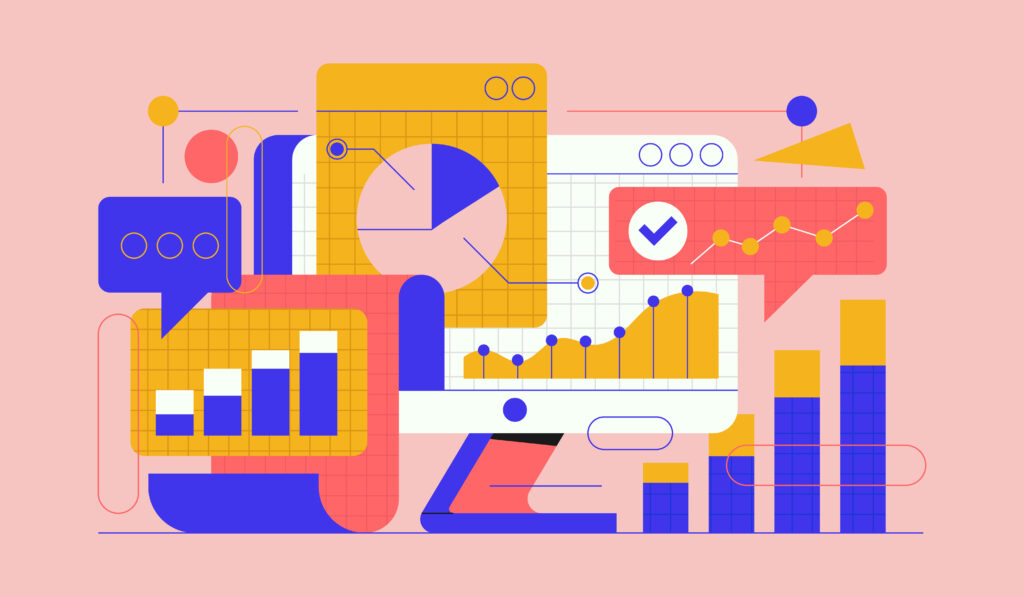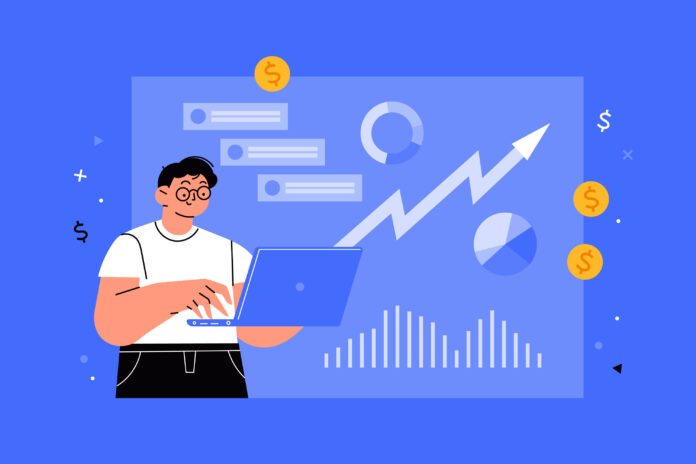Financial reporting – love it or hate it, it’s a crucial part of any business. But what if there was a way to streamline the process, slash reporting times, and free up your team for more strategic work? Enter financial reporting software – your secret weapon for conquering annual and interim reporting. By selecting the right software, your company can unlock a treasure trove of benefits!
Why Do Businesses Need to File an Annual & Interim Financial Statement?
Businesses need to file both annual and interim financial statements for distinct reasons. Annual financial statements, prepared at the end of the financial year, provide a comprehensive overview of a company’s financial performance and position, aiding stakeholders in making informed decisions. These statements are audited and follow a common accounting framework like International Financial Reporting Standards (IFRS), ensuring reliability and transparency.
On the other hand, interim financial statements, covering periods shorter than a year and often issued quarterly, serve the purpose of providing timely updates on a company’s financial status throughout the year. While interim statements are unaudited, they play a crucial role in keeping investors, creditors, and the public informed about a company’s performance and financial condition before the year-end. This timely reporting enhances stakeholders’ understanding of a company’s ability to generate earnings, cash flows, and its overall financial health.
Interim Financial Statements and Annual Financial Statements: The Difference
When viewed analytically, interim and annual financial statements are similar in terms of income reports, balance sheets, and cash flow statements. However, there are some noticeable differences between the two. Here’s a breakdown:
Timeframe:
- Interim: Covers a period less than a year, often quarters (Q1, Q2, etc.).
- Annual: Covers the full fiscal year of the company.
Level of Detail:
- Interim: Usually condensed versions of the annual statements, focusing on new activity and significant changes since the last report.
- Annual: Most comprehensive financial picture, with detailed breakdowns of income, expenses, assets, and liabilities.
Accuracy:
- Interim: May have estimations due to the lack of a physical year-end inventory count and potential for unclosed accruals.
- Annual: Considered more accurate as they undergo a full audit and reflect finalized year-end figures.
Disclosure Requirements:
- Interim: Less stringent disclosure requirements compared to annual reports.
- Annual: Must comply with stricter accounting standards and include detailed disclosures.
Audit:
- Interim: Not typically audited by an external auditor.
- Annual: Require an independent audit to verify their accuracy.
Purpose:
- Interim: Provide a timely update on the company’s performance and keep stakeholders informed.
- Annual: Serve as the official record of the company’s financial health for the past year.
What is Financial Reporting Software?
Financial reporting software is a type of accounting application designed to automate and streamline the process of preparing financial statements and reports. It helps organizations efficiently collect, consolidate, and analyze financial data from various sources to generate accurate and compliant financial reports, including interim and annual reports.
The key features of financial reporting software include:
- Automated data consolidation: The software can automatically pull financial data from various sources and consolidate it into a centralized system.
- Automated report generation: Financial reporting software can automatically generate standard financial statements like income statements, balance sheets, and cash flow statements, as well as custom reports.
- Data visualization and analytics: These tools provide interactive dashboards, charts, and other visualizations to help users analyze financial data and gain insights.
- Collaboration and distribution: Financial reporting software often includes features to allow multiple users to access, review, and distribute financial reports.
- Compliance and governance: The software helps ensure financial reports adhere to accounting standards and regulatory requirements.
The main benefits of using financial reporting software include increased efficiency, accuracy, timeliness, and data-driven decision-making for businesses
Different Classifications of Financial Reporting Software:
Financial reporting software encompasses a wide range of tools that cater to different business needs and functionalities. Here’s a breakdown of the most common classifications:
-
Accounting Software:
Accounting software integrates core accounting functions like accounts payable/receivable, bookkeeping, and general ledger. It often includes basic financial reporting features for generating common statements like balance sheets and income statements.
-
Enterprise Resource Planning (ERP) Systems:
ERP systems are comprehensive business management software suites encompassing various departments, including finance and accounting. It offers robust financial reporting capabilities with advanced features like drill-down reporting and financial analysis tools.
-
Financial Planning & Analysis (FP&A) Software:
FP&A tools specializes in financial planning, budgeting, and forecasting alongside financial reporting.It provides advanced modeling and scenario planning capabilities to analyze financial performance and make data-driven decisions.
-
Tax Reporting Software:
Tax reporting software streamlines tax preparation and filing processes by integrating with accounting and payroll systems. It ensures compliance with ever-changing tax regulations and automates tax calculations.
-
Business Intelligence (BI) tools:
BI tools provide advanced analytics and reporting capabilities, allowing users to create personalised financial reports using interactive dashboards. It helps identify trends and potential risks early on, you can take proactive measures to mitigate them.
Choosing the right financial reporting software depends on your specific needs and company size. Consider factors like the complexity of your reporting requirements, desired functionalities, budget, and scalability.

The 10 Best Financial Reporting Software Tools of 2024
Choosing the right financial reporting software can be crucial for businesses, especially when it comes to streamlining interim and annual reporting. Here’s a breakdown of 10 of the best options to consider in 2024:
-
Oracle NetSuite
Feature-rich solution ideal for large organizations
NetSuite offers a comprehensive finance and accounting suite that caters to large enterprises. It boasts real-time financial reporting, customizable dashboards, and robust analytics for in-depth insights.
Pros:
- Scalable and adaptable for complex reporting needs
- Streamlines various financial processes
Cons:
- Costlier than most options
- Implementation can be complex for smaller businesses
-
Vena Solutions
Cloud-based CPM for streamlined reporting
Vena Solutions is a corporate performance management (CPM) platform designed to improve financial planning, budgeting, and reporting. Its cloud-based system facilitates collaboration and simplifies the consolidation process.
Pros:
- User-friendly interface
- Strong workflow automation
Cons:
- May not be ideal for basic reporting needs
- Pricing can be high for smaller businesses
-
Planful
Cloud-based FP&A for financial data management
Planful is a cloud-based financial planning and analysis (FP&A) software that provides budgeting, forecasting, and reporting functionalities. It offers business intelligence tools for data analysis and informed decision-making.
Pros:
- Easy to learn and use
- Integrates well with other business systems
Cons:
- Limited customization options for reports
- Lacks some advanced features of pricier solutions
-
Workday Adaptive Planning
Cloud-based solution for continuous planning
Workday Adaptive Planning is a cloud-based platform designed for continuous planning and budgeting. It allows for scenario modeling and facilitates collaboration across departments.
Pros:
- Flexible and adaptable for various reporting needs
- Strong security features
Cons:
- Geared more towards enterprise-level requirements
- Can be pricey for smaller businesses
-
Datarails
Focuses on AI-powered financial reporting
Datarails is a cloud-based financial reporting software that leverages artificial intelligence (AI) for data automation and streamlining the reporting process. It offers real-time reporting and simplifies complex financial tasks.
Pros:
- Automates data consolidation and reporting tasks
- Uses AI to identify trends and anomalies
Cons:
- Requires some technical expertise for setup
- Limited customization options for reports
-
Cube
User-friendly option for SMB financial reporting
Cube is a user-friendly financial reporting software designed for small and medium-sized businesses (SMBs). It offers budgeting, cash flow forecasting, and financial statement generation in an easy-to-use interface.
Pros:
- Affordable solution for SMBs
- Simple and intuitive interface
Cons:
- Limited features compared to more comprehensive solutions
- May not be suitable for complex reporting requirements
-
QuickBooks
Popular choice for accounting and basic reporting
QuickBooks is a well-known accounting software that offers basic financial reporting functionalities. It’s suitable for freelancers, startups, and small businesses that need to track income and expenses, generate reports, and manage basic accounting tasks.
Pros:
- User-friendly and widely adopted
- Affordable option for basic needs
Cons:
- Limited reporting features for complex needs
- Not suitable for large-scale businesses
-
SAP Business Intelligence (BI)
Advanced analytics and reporting for large enterprises
SAP Business Intelligence (BI) offers advanced reporting and analytics functionalities for large organizations. It provides drill-down capabilities for deep dives into financial data and facilitates data visualization for better insights.
Pros:
- Powerful analytics and data visualization tools
- Scalable for enterprise-level reporting
Cons:
- Complex to implement and requires technical expertise
- Expensive solution for most businesses
-
OneStream
Cloud-based platform for unified financial reporting
OneStream is a cloud-based financial reporting platform that provides a unified solution for consolidation, reporting, and planning.
Pros:
- Consolidates various financial data sources into a single platform
- Streamlines complex reporting processes
Cons:
- Geared towards larger organizations with complex reporting needs
- Can be costly for smaller businesses
-
Sage Intacct
Cloud-based ERP with robust financial reporting
Sage Intacct is a cloud-based enterprise resource planning (ERP) system with comprehensive financial management functionalities. It offers real-time reporting, budgeting, and forecasting capabilities.
Pros:
- Scalable solution for growing businesses
- Integrates seamlessly with other Sage Intacct modules
Cons:
- Higher price point compared to some accounting-focused solutions
- May be an overkill for businesses with simpler reporting needs
Disclaimer: The information provided in this list of financial reporting software tools is for informational purposes only and should not be considered financial advice. Pricing information can be subject to change. Please visit the respective vendor websites for the latest pricing details.

Key Features to Look for in Financial Reporting Software
Here’s a checklist to help you choose the right financial reporting software:
Core Accounting Features
- General Ledger & Chart of Accounts:Track your company’s financial health with ease.
- Accounts Payable & Receivable:Manage your incoming and outgoing funds efficiently.
- Invoicing & Bill Pay:Automate the process of sending and receiving invoices.
- Bank Reconciliation:Ensure your financial records match your bank statements.
Reporting & Automation
- Financial Statement Generation:Easily generate key financial statements like profit and loss (P&L) and balance sheets.
- Customizable Reports: Tailor reports to fit your specific needs.
- Automated Report Generation: Save time by scheduling reports to run automatically.
- Data Visualization Tools: Gain deeper insights from your financial data with charts and graphs.
Integration & Security
- Integrations with Existing Software:Connect your financial reporting software with other business applications you use, like CRM or ERP software.
- Data Security: Ensure your financial data is safe and secure with robust security features.
- User Permissions & Access Control: Control who can access and modify financial data.
Additional Considerations
- Scalability: Choose a software that can grow with your business.
- Cloud-Based vs. On-Premise: Decide whether a cloud-based or on-premise solution is right for you.
- Ease of Use: Select software that is easy to learn and use for your team.
- Customer Support: Look for a vendor that offers excellent customer support.
Struggling to find the perfect financial reporting software? Stop wasting time and money. StaQ.ai, the one-stop software marketplace, helps you compare, identify, and choose the best financial reporting software for your custom needs. Find, compare, and choose the software that empowers your success at StaQ.ai!
Frequently Asked Questions – Financial Reporting Software
What is financial reporting software and why do I need it?
Financial reporting software automates tasks like collecting financial data, generating reports, and creating financial statements. It saves time, reduces errors, and provides valuable insights to help you make informed business decisions.
Is financial reporting software expensive?
Financial reporting software pricing varies depending on features, company size, and deployment options (cloud-based vs. on-premise). There are options for every budget, from free basic versions to more comprehensive paid plans.
How does financial reporting software differ from accounting software?
Accounting software focuses on the nuts and bolts of recording financial transactions. Think of it as the system that captures your raw financial data. Whereas, Financial reporting software builds on top of your accounting data. It takes all data in your accounting software and transforms it into professional financial statements, like profit and loss statements and balance sheets.
What is the difference between IFRS and US GAAP Standards?
IFRS and US GAAP are two major accounting rulebooks, but with different approaches. IFRS is principles-based, offering more flexibility and room for interpretation. US GAAP is more rule-based, providing specific instructions for accounting treatment. This can lead to slight variations in how companies report their finances depending on which standards they follow.
How do I prepare an Interim & Annual Financial Report?
Financial reporting software can greatly assist in preparing both interim and annual financial reports. With built-in templates, validation rules, and workflow management capabilities, financial reporting software streamlines the reporting process, enhances accuracy, and ensures consistency across reporting periods.




